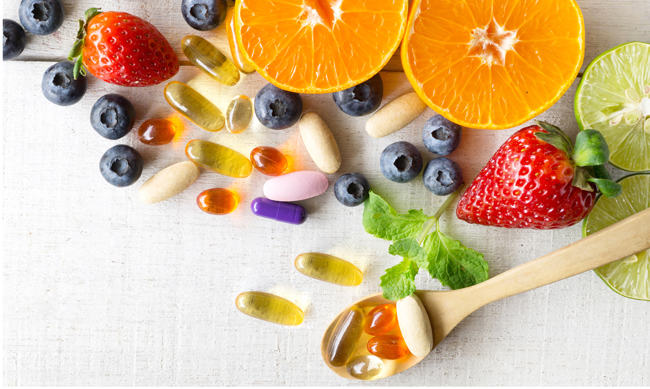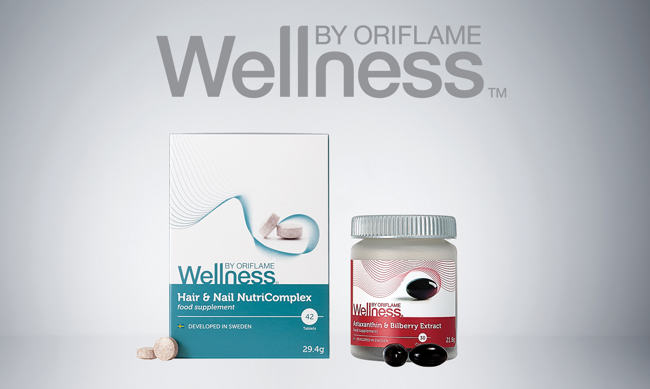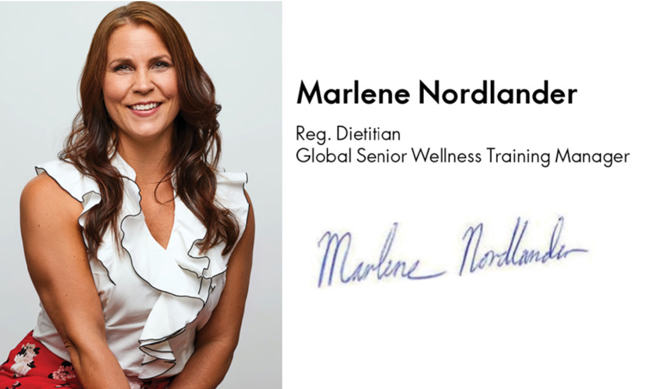As a consumer it can sometimes be difficult to navigate through the food jungle to find the most beneficial food for your health and wellbeing. A start is of course to know how to read food labels so you can make a more health-conscious choice. But certain types of food have benefits beyond the nutritional values and ingredient list.
Let’s explore the difference between different types of “food with benefits”!
Functional foods
Functional foods are a group of foods that can be consumed as part of our usual diet, but with documented health effects. The concept originated in Japan in the 1980s when government agencies started approving foods with proven benefits to improve the health of the general population (Lang 2007).
Functional foods cover a variety of food categories. From minimally processed, whole foods to fortified, enriched, or enhanced foods. Some examples include foods fortified with vitamins, minerals, probiotics, dietary fibre and prebiotic fibres.
Nutrient dense foods like fruits, berries, vegetables, nuts, seeds, and whole grains are considered functional foods due to their naturally high levels of vitamins, minerals, phytonutrients, and dietary fibre that benefits your health. By fortifying foods naturally rich in nutrients you can enhance their benefits, e.g., prebiotic fibres found in food such as chicory root, garlic and banana have proven overall health benefits and immune enhancing properties (Slavin 2013, Rastall 2005).
Nutraceuticals
Nutra… what? Nutraceuticals! Ever heard about it before? Maybe not. The word is a combination of “nutrition” and “pharmaceutical”. The term was coined in 1989 by Dr Stephen L. DeFelice, founder and chairman of the Foundation of Innovation Medicine. Nutraceuticals are nutrients that are consumed for a health benefit. Based on their sources, they are categorized as dietary supplements or herbal bioactive compounds (Sachdeva 2020).
An example of a nutraceutical is naturally extracted prebiotic fibres that can be consumed in a powder format.
There is still no internationally accepted and regulated definition of nutraceuticals. However, from a safety point of view, nutraceuticals are trusted products.
Nutricosmetics
Another expression is nutricosmetics which is a hybrid between “nutrition” and “cosmetics” and can be described as products and ingredients that act as nutritional supplements to care for the natural beauty of skin, nails, and hair. They work from the inside to promote beauty from within (Dini 2019).
The food-derived ingredients and bioactive compounds from plant and animal sources have shown potential in promoting overall health including skin health (Pérez-Sánchez 2018, Faria-Silva 2020). These include nutrients such as vitamins and minerals, phytochemicals, polyphenols, carotenoids, amino acids and peptides, fats and essential fatty acids, prebiotics and probiotics, water etc. (Pérez-Sánchez 2018, Faria-Silva 2020).
What’s the difference?
The difference between these three types of classifications is quite subtle. Some sources state that they are all the same, only different wordings, why the definition is somewhat intertwined between them. But when looking deeper, the main difference between functional foods and nutraceuticals is that functional foods are food with naturally occurring bioactive compounds or fortified food products, such as carrots with beta-carotene, bananas with prebiotic fibres, or cow’s milk with added vitamin D, etc. Nutraceuticals are extracted components of foods, such as bioactive compounds, that can be used in fortified foods, dietary supplements, or herbal products. Furthermore, the format is often different; functional foods are whole foods, while nutraceuticals often come in the form of pills, capsules, powders, or liquids.
When it comes to nutricosmetics, one could say that nutricosmetics are a type of nutraceuticals specifically targeting your appearance from within.
Beneficial compounds with Wellness by Oriflame
Wellness by Oriflame has products that could be considered both nutraceuticals and nutricosmetics but since there is no regulatory definition for these classifications, we prefer to address them as food or dietary supplements.
We believe it’s important to be in line with regulations, that’s why we adhere to the European Food Safety Authority’s (EFSA’s) nutrition & health claims for food and dietary supplements. So, from a safety and quality point of view, you can always trust our products! Additionally, all our product’s key ingredients are based on scientific research and the products go through a multi-phase testing, including:
1. Ingredient screening
2. Sensory test
3. Shelf-life studies for up to 2 years!
4. Temperature and environmental simulations
5. Microbiology reviews
So, you can rest assure our products are of the highest quality. Let’s look at some of our products to explore some of the additional benefits, beyond the nutritional values.
Hair & Nail NutriComplex
The Hair & Nail NutriComplex provides a combination of different nutrients that are beneficial for hair and nail health*. It contains the amino acids L-Lysine and L-Cysteine, flavonoid rich apple extract, the antioxidant vitamin C, and the mineral iron. In addition, it also contains the minerals selenium and zinc that contribute to the maintenance of normal hair and nails. Taken alongside a balanced diet, regular exercise and stress management, the blend helps support beautiful hair and nails!
Astaxanthin & Bilberry Extract
The Astaxanthin & Bilberry Extract provides a combination of antioxidants that includes nature’s most powerful antioxidant astaxanthin from microalgae (Haematococcus pluvialis L.) and bilberry extract from bilberries (Vaccinium myrtillus L.), vitamin C and E. Together, this combination helps combat damaging oxidative stress caused by excessive exposure to harmful free radicals. It does so by providing antioxidant protection to our cells, from the inside-out and thereby helping promote overall health and skin health*.
* Food supplements should not be used as a substitute for a balanced and varied diet.
Always ensure you eat a varied and balanced diet as a nutritious foundation and then top up the diet with foods or supplements that bring additional benefits beyond the base nutritional values, based on your needs and goals.
References
- Dini I, Laneri S. Nutricosmetics: A brief overview. Phytother Res. 2019 Dec;33(12):3054-3063. Epub 2019 Sep 3.
- Faria-Silva, Ascenso A, Costa AM, et al. Feeding the skin: A new trend in food and cosmetics con vergence. Trends Food Sci &Technol. 2020;95:21-32.
- Lang T. Functional foods. BMJ. 2007;334(7602):1015-1016.
- Pérez-Sánchez A, Barrajón-Catalán E, Herranz-López M, et al. Nutraceuticals for Skin Care: A Comprehensive Review of Human Clinical Studies. Nutrients. 2018;10(4):403.
- Rastall RA, et al. Modulation of the microbial ecology of the human colon by probiotics, prebiotics and synbiotics to enhance human health: an overview of enabling science and potential applications. FEMS Microbiology Ecology. 2005; 52:145-52.
- Sachdeva V, Roy A, Bharadvaja N. Current Prospects of Nutraceuticals: A Review. Curr Pharm Biotechnol. 2020;21(10):884-896.
- Slavin J. Fiber and prebiotics: mechanisms and health benefits. Nutrients. 2013 Apr 22;5(4):1417-35.









